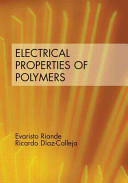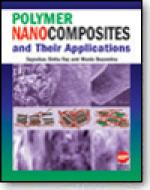Descrição
CONTENTS.:
Preface
1. Introduction to Plastics and Polymers
1.1. Polymerization
1.1.1. Addition Polymerization
1.1.2. Condensation Polymerization
1.2. Copolymers
1.3. Linear, Branched, and Crosslinked Polymers
1.4. Polarity
1.5. Unsaturation
1.6. Steric Hindrance
1.7. Isomers
1.7.1. Structural isomers
1.7.2. Geometric Isomers
1.7.3. Stereosiomers – Syndiotactic, Isotactic, Atactic
1.8. Inter and Intra molecular attractions in polymers
1.8.1. Hydrogen Bonding
1.8.2. Van der waals Forces
1.8.3. Chain Entanglement
1.9. General Classifications
1.9.1. Molecular Weight
1.9.2. Thermosets vs. Thermoplastics
1.9.3. Crystalline vs. Amorphous
1.9.4. Orientation
1.10. Plastic Compositions
1.10.1. Polymer Blends
1.10.2. Elastomers
1.10.3. Additives
1.10.3.1. Fillers, Reinforcement, Composites
1.10.3.2. Combustion Modifiers, Fire and Flame Retardants, and Smoke Suppressants
1.10.3.3. Release Agents
1.10.3.4. Slip additives/Internal Lubricants
1.10.3.5. Antiblock Additives
1.10.3.6. Catalysts
1.10.3.7. Impact Modifiers and Tougheners
1.10.3.8. UV Stabilizers
1.10.3.9. Optical Brighteners
1.10.3.10. Plasticizers
1.10.3.11. Pigments, Extenders, Dyes, Mica
1.10.3.12. Coupling Agents
1.10.3.13. Thermal Stabilizers
1.10.3.14. Antistats
1.11. Summary
2. Chapter 2 – Introduction to the Mechanical, Thermal and Permeation Properties of Plastics and Elastomers
2.1. Physical property testing of plastic films
2.1.1. Specific gravity, density
2.1.2. Dimensional stability
2.1.3. hydroscopic expansion
2.1.4. residual shrinkage
2.1.5. Coefficient of Thermal Expansion
2.1.6. Appearance: Color, Haze and Gloss
2.1.6.1. Color
2.1.6.2. Gloss measurement
2.1.6.3. Haze measurement
2.1.7. Coefficient of friction
2.2. Mechanical Property Testing of Plastic films
2.2.1. Tensile Properties
2.2.2. Flexural Properties
2.2.3. Folding endurance (MIT)
2.2.4. Puncture properties
2.2.4.1. High speed puncture test
2.2.4.2. Drop Dart Impact Test for Plastics Film
2.2.5. Tear Properties
2.2.5.1. Elmendorf Tear Strength
2.2.5.2. Trouser Tear Resistance
2.3. Thermal Property Testing of Plastic films
2.3.1. Melt Flow Index
2.3.2. melting point
2.3.3. Glass Transition Temperature, Tg
2.3.4. Other Thermal Tests
2.4. Electrical Properties of Films
2.4.1. Dielectric constant (or Relative Permittivity)
2.4.2. Dissipation factor
2.4.3. Dielectric Strength
2.4.4. Surface Resistivity
2.4.5. Volume Resistivity
2.5. Permeation of films
2.5.1. History
2.5.2. Transport of Gases and Vapors though solid materials-
2.5.3. Effusion
2.5.4. Solution-Diffusion and Pore-flow Models
2.5.4.1. Dependence of Permeability, Diffusion and Solubility Pressure
2.5.4.2. Dependence of Permeability, Diffusion and Solubility on Temperature – The Arrhenius Equation
2.5.5. Multiple layered films
2.5.6. Permeation and Vapor Transmission Testing
2.5.6.1. Units of Measurement
2.5.6.2. Gas Permeation test cells
2.5.6.3. Vapor Permeation Cup testing
2.5.6.4. Standard Tests for permeation and vapor transmission
3. Production of films
3.1. Extrusion
3.2. Blown Film
3.3. Calendaring
3.4. Casting film lines
3.5. Post film formation processing
3.6. Web coating
3.6.1. Gravure Coating
3.6.2. Reverse Roll Coating
3.6.3. Knife On Roll Coating
3.6.4. Metering Rod (Meyer Rod) Coating
3.6.5. Slot Die (Slot, Extrusion) Coating
3.6.6. Immersion (Dip) Coating
3.6.7. Vacuum deposition
3.6.8. Web Coating process summary
3.7. Lamination
3.7.1. Hot Roll/Belt Lamination
3.7.2. Flame Lamination
3.8. Orientation
3.8.1. Machine Direction Orientation
3.8.2. Biaxial orientation
3.8.3. Blown Film Orientation
3.9. Skiving
3.10. Coatings
3.11. Summary
4. Markets and Applications for films
4.1. Barrier Films in packaging
4.1.1. Water Vapor
4.1.2. Atmospheric Gases
4.1.3. Odors and Flavors
4.1.4. Markets and Applications of barrier films
4.1.5. Some illustrated applications of multiple layered films
5. Styrenic Plastics
5.1. Acrylonitrile-Butadiene-Styrene Copolymer (ABS)
5.2. Acrylonitrile-Styrene-Acrylate Copolymer (ASA)
5.3. Polystyrene (PS)
5.4. Styrene-Acrylonitrile Copolymer (SAN)
6. Polyesters
6.1. Liquid Crystal Polymer (LCP)
6.2. Polybutylene Terephthalate (PBT)
6.3. Polycarbonate (PC)
6.4. Polycyclohexylene-dimethylene Terephthalate (PCT)
6.5. Polyethylene Napthalate (PEN)
6.6. Polyethylene Terephthalate (PET)
7. Polyimides
7.1. Polyamide-imide
7.2. Polyetherimide
7.3. Polyimide
8. Polyamides (Nylons)
8.1. Polyamide 6 (Nylon 6)
8.2. Polyamide 12 (Nylon 12)
8.3. Polyamide 66 (Nylon 66)
8.4. Polyamide 66/610 (Nylon 66/610)
8.5. Polyamide 6/12 (Nylon 6/12)
8.6. Polyamide 666 (Nylon 666 or 6/66)
8.7. Polyamide 6/69 (Nylon 6/6.9)
8.8. Nylon 1010
8.9. Specialty Polyamides
8.9.1. Amorphous Polyamides
8.9.2. Nylon PACM-12
8.9.3. PAA – Polyarylamide
9. Polyolefins
9.1. Polyethylene (PE)
9.1.1. Unclassified polyethylene
9.1.2. Ultralow Density polyethylene (ULDPE)
9.1.3. Linear low density polyethylene (LLDPE)
9.1.4. Low density polyethylene (LDPE)
9.1.5. Medium density polyethylene (MDPE)
9.1.6. High density polyethylene (HDPE)
9.2. Polypropylene (PP)
9.3. Polybutene-1 – PB-1
9.4. Polymethyl Pentene (PMP)
9.5. Cyclic Olefin Copolymer (COC)
9.6. Plastomers
10. Polyvinyls & Acrylics
10.1. Ethylene-Vinyl Acetate Copolymer (EVA)
10.2. Ethylene – Vinyl Alcohol Copolymer (EVOH)
10.3. Polyvinyl Alcohol (PVOH)
10.4. Polyvinyl Chloride (PVC)
10.5. Polyvinylidene Chloride (PVDC)
10.6. Polyacrylics
10.7. Acrylonitrile-Methyl Acrylate Copolymer (AMA)
10.8. Ionomers
11. Fluoropolymers
11.1. Polytetrafluoroethylene (PTFE)
11.2. Fluorinated Ethylene Propylene (FEP)
11.3. Perfluoro Alkoxy (PFA)
11.3.1. PFA
11.3.2. MFA
11.4. Amorphous fluoropolymer – Teflon AF®
11.5. Polyvinyl Fluoride (PVF)
11.6. Polychlorotrifluoroethylene (PCTFE)
11.7. Polyvinylidene Fluoride (PVDF)
11.8. Ethylene-Tetrafluoroethylene Copolymer (ETFE)
11.9. Ethylene-Chlorotrifluoroethylene Copolymer (ECTFE)
12. High Temperature/High Performance Polymers
12.1. Polyether ether ketone (PEEK
12.2. Polysiloxane
12.3. Polyphenylene Sulfide (PPS)
12.4. Polysulfone (PSU)
12.5. Polyethersulfone (PES)
12.6. Polybenzimidazole (PBI)
12.7. Parylene (poly(p-xylylene))
12.8. Polyphenylene sulfone (PPSU)
13. Elastomers and rubbers
13.1. Thermoplastic Polyurethane Elastomers (TPU)
13.2. Olefinic Thermoplastic Elastomers (TPO)
13.3. Thermoplastic Copolyester Elastomers (TPE-E or COPE)
13.4. Thermoplastic Polyether Block Amide Elastomers (PEBA)
13.5. Styrenic Block Copolymer (SB




